US unemployment surges to Depression-era level, analysts say it will only get worse
Xinhua
1588984127000

Workers wait in line to enter a CityMD office for COVID-19 tests in the Brooklyn borough of New York, the United States, on May 8, 2020. New data showed that U.S. employers cut a staggering 20.5 million jobs in April, erasing a decade of job gains since the global financial crisis and pushing the unemployment rate to a record 14.7 percent. While this marks the highest level of unemployment since the Great Depression, analysts said the figure does not capture the full scale of the COVID-19-induced job crisis, and the worst is yet to come. (Photo by Michael Nagle/Xinhua)

First responders wheel a man on a stretcher in the Brooklyn borough of New York, the United States, on May 8, 2020. New data showed that U.S. employers cut a staggering 20.5 million jobs in April, erasing a decade of job gains since the global financial crisis and pushing the unemployment rate to a record 14.7 percent. While this marks the highest level of unemployment since the Great Depression, analysts said the figure does not capture the full scale of the COVID-19-induced job crisis, and the worst is yet to come. (Photo by Michael Nagle/Xinhua)
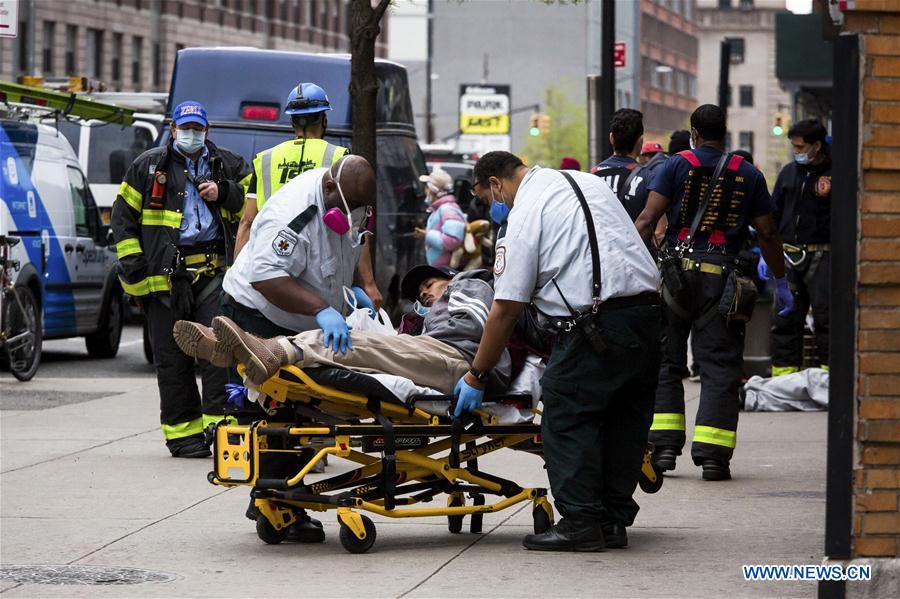
First responders wheel a man on a stretcher in the Brooklyn borough of New York, the United States, on May 8, 2020. New data showed that U.S. employers cut a staggering 20.5 million jobs in April, erasing a decade of job gains since the global financial crisis and pushing the unemployment rate to a record 14.7 percent. While this marks the highest level of unemployment since the Great Depression, analysts said the figure does not capture the full scale of the COVID-19-induced job crisis, and the worst is yet to come. (Photo by Michael Nagle/Xinhua)
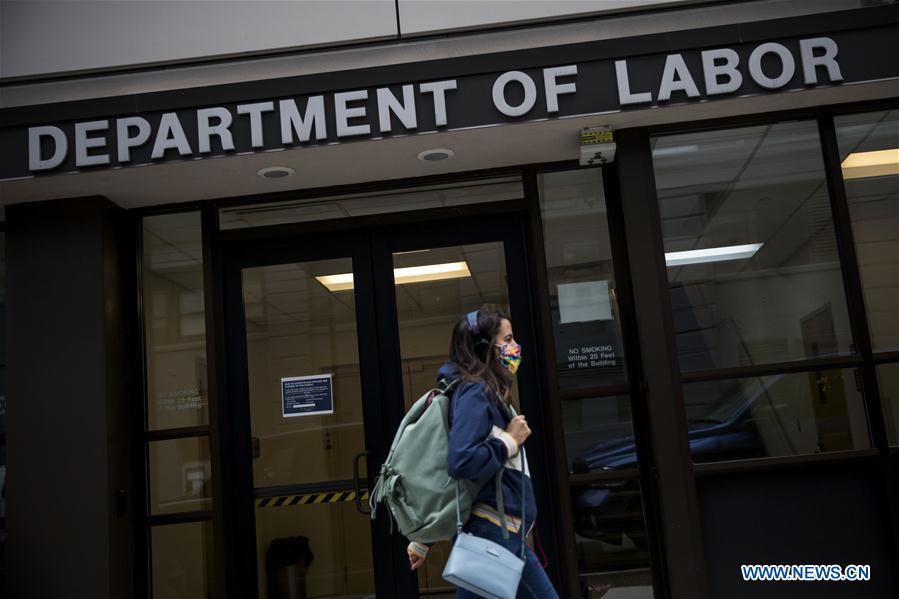
A pedestrian wearing a face mask walks past the New York State Department of Labor office in the Brooklyn borough of New York, the United States, on May 8, 2020. New data showed that U.S. employers cut a staggering 20.5 million jobs in April, erasing a decade of job gains since the global financial crisis and pushing the unemployment rate to a record 14.7 percent. While this marks the highest level of unemployment since the Great Depression, analysts said the figure does not capture the full scale of the COVID-19-induced job crisis, and the worst is yet to come. (Photo by Michael Nagle/Xinhua)
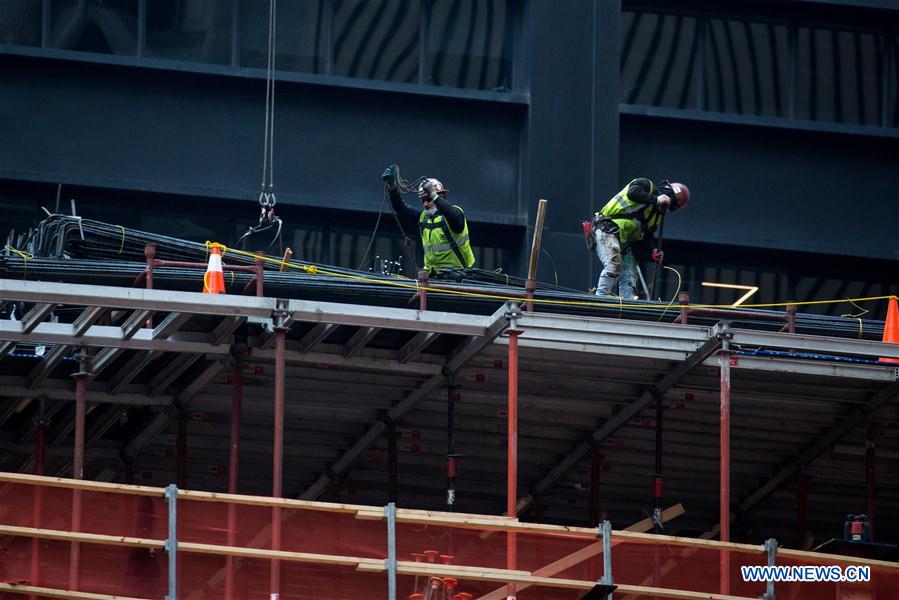
Builders work at a construction site in New York, the United States, on May 8, 2020. New data showed that U.S. employers cut a staggering 20.5 million jobs in April, erasing a decade of job gains since the global financial crisis and pushing the unemployment rate to a record 14.7 percent. While this marks the highest level of unemployment since the Great Depression, analysts said the figure does not capture the full scale of the COVID-19-induced job crisis, and the worst is yet to come. (Photo by Michael Nagle/Xinhua)
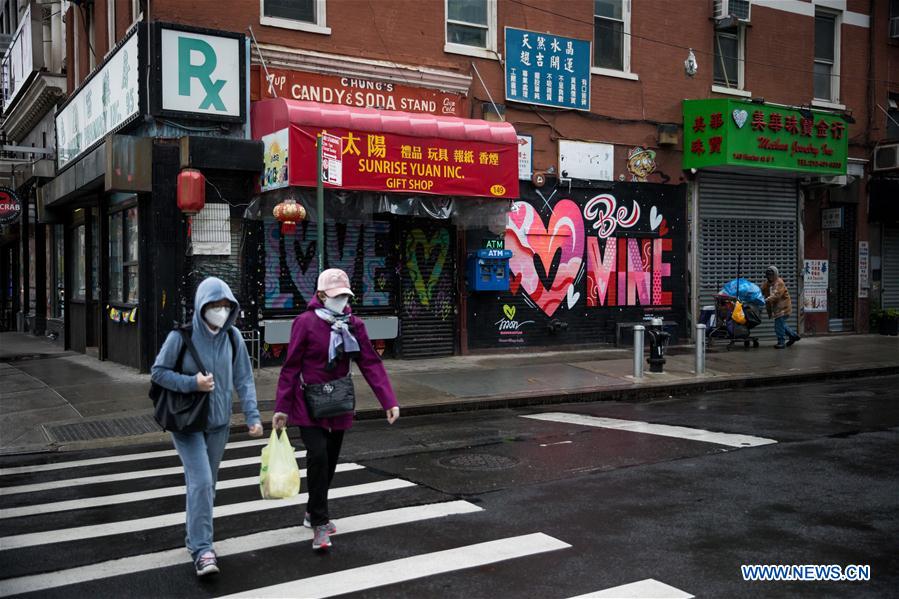
Pedestrians wearing face masks walk across a street in New York, the United States, on May 8, 2020. New data showed that U.S. employers cut a staggering 20.5 million jobs in April, erasing a decade of job gains since the global financial crisis and pushing the unemployment rate to a record 14.7 percent. While this marks the highest level of unemployment since the Great Depression, analysts said the figure does not capture the full scale of the COVID-19-induced job crisis, and the worst is yet to come. (Photo by Michael Nagle/Xinhua)
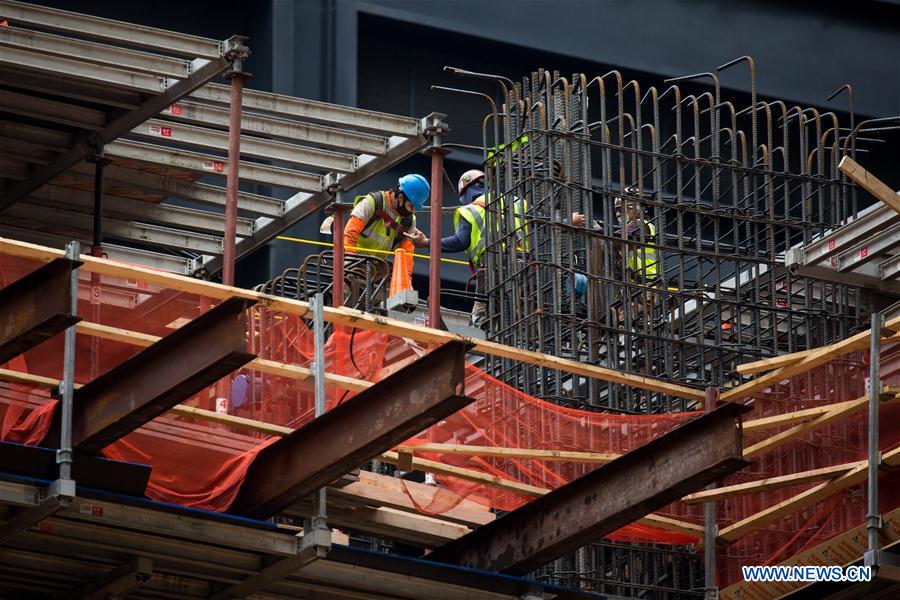
Builders work at a construction site in New York, the United States, on May 8, 2020. New data showed that U.S. employers cut a staggering 20.5 million jobs in April, erasing a decade of job gains since the global financial crisis and pushing the unemployment rate to a record 14.7 percent. While this marks the highest level of unemployment since the Great Depression, analysts said the figure does not capture the full scale of the COVID-19-induced job crisis, and the worst is yet to come. (Photo by Michael Nagle/Xinhua)


